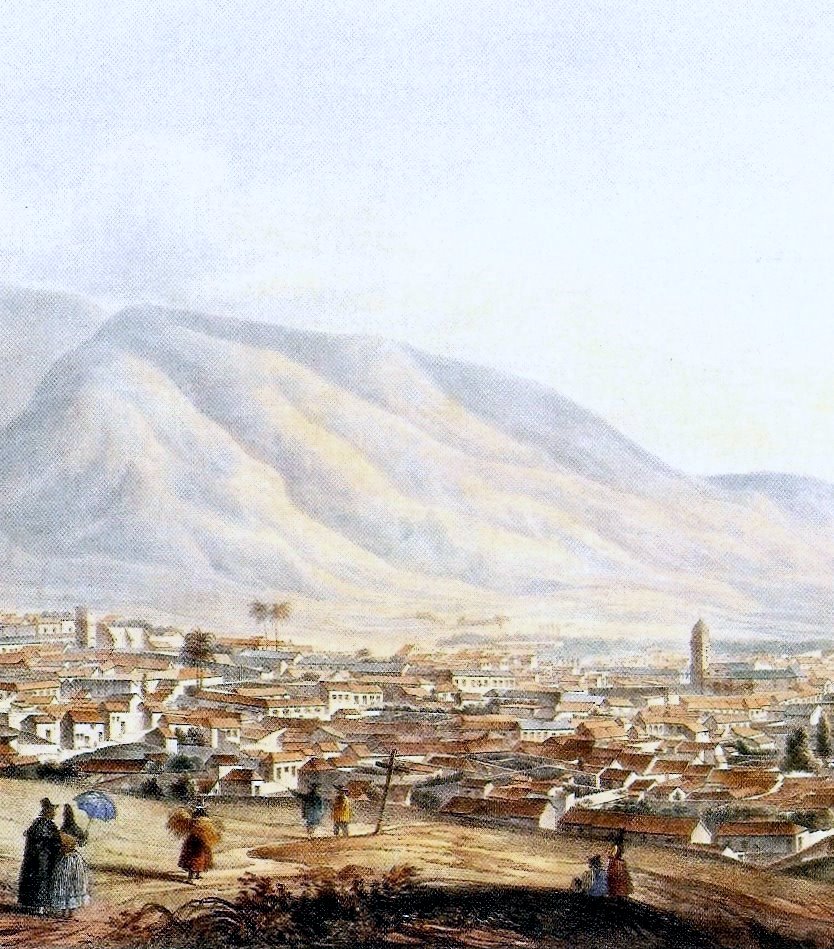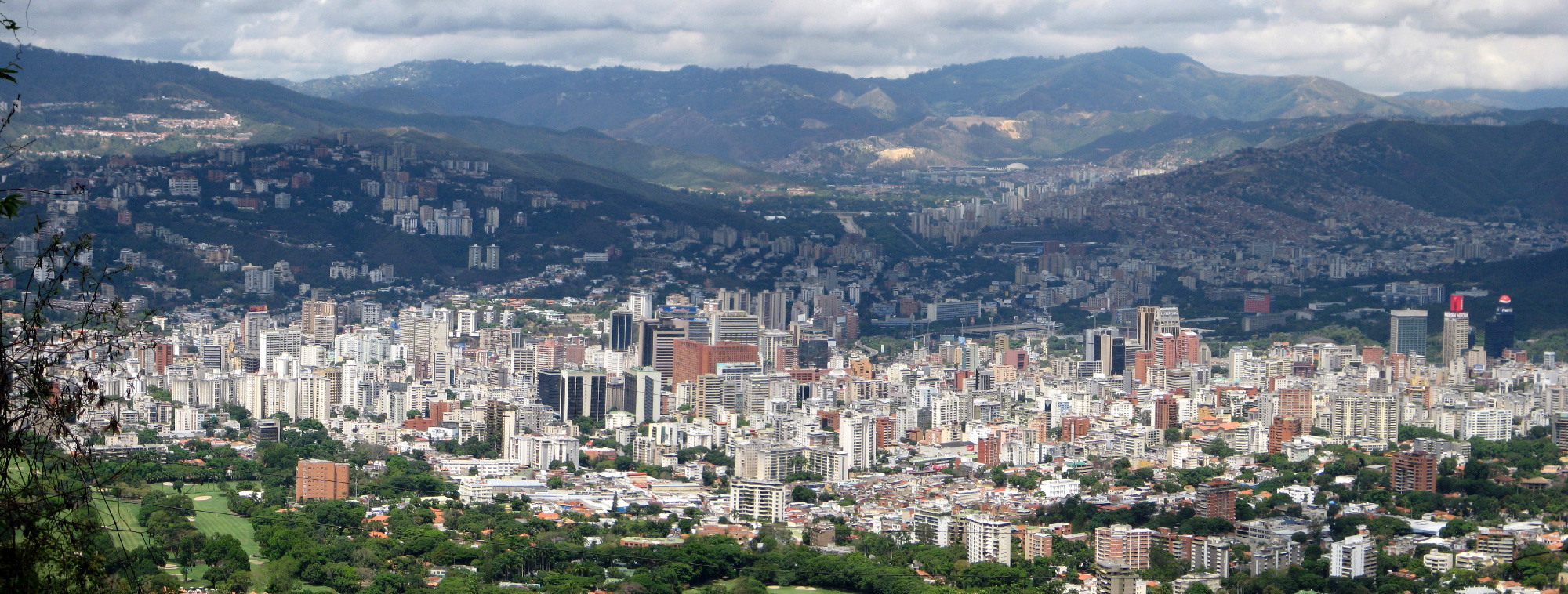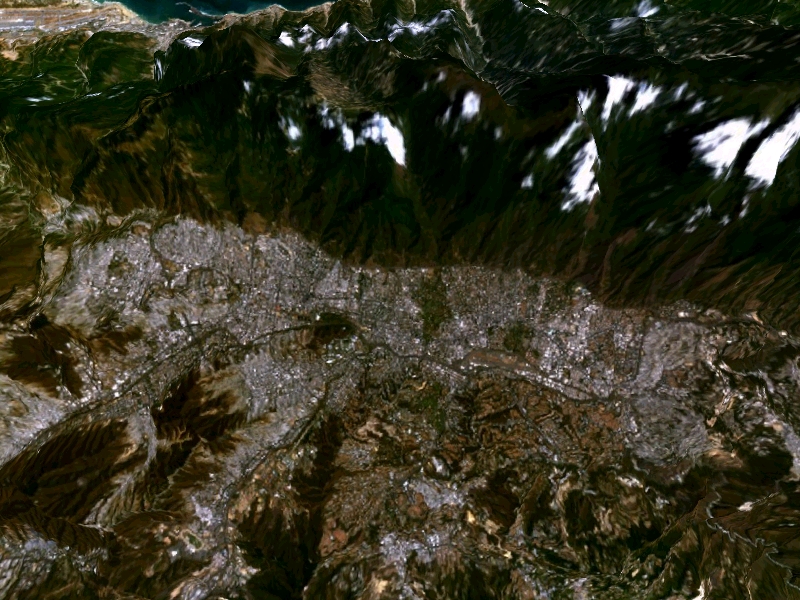Alexander von Humboldt wrote in the early XIX century about Caracas' benign temperatures. Back then the saying "Caracas has an eternal spring" was already old and von Humboldt mentioned it as a common place back then. That common place was still used in the eighties of the XX century.
At the end of the XVI century wheat was grown in the Caracas Valley and exported to Cartagena de Indias and other Spanish harbours of the Caribbean where Spanish soldiers wanted to have their daily wheat-based bread and were still not used to our arepas or tamales. Wheat exports were so important that they became the economic motor of central Venezuela for a couple of decades and contributed to secure Caracas' role as main city in the Province of Venezuela.
Wheat exports collapsed in the XVII century due to competition from areas with more favourable climates. Cocoa and later coffee took over as Venezuelan main exports, but still, people kept growing wheat around Caracas for quite some time, something few Caraquenos would imagine possible now and not only because the whole valley is chock-a-block with cement and metal.
Wheat exports collapsed in the XVII century due to competition from areas with more favourable climates. Cocoa and later coffee took over as Venezuelan main exports, but still, people kept growing wheat around Caracas for quite some time, something few Caraquenos would imagine possible now and not only because the whole valley is chock-a-block with cement and metal.
 |
| Caracas in 1839 |
A German by the name of Otto Bürger wrote in the early XX century a book about Venezuela, "Venezuela; ein Führer durch das Land und seine Wirtschaft". The book was published in 1922 and you can find a lot of fascinating data there.
I took from there data on mean temperature for Caracas according to the Cagigal Centre and compared those temperatures to the mean temperatures now. The average yearly temperature in the Cagigal weather centre in the early part of the XX century was 19.7 C° and it is 23.1C° now. That's quite a difference.
Caracas had about 92200 inhabitants in 1922. Venezuela's capital has over 3, 4 or 5 million people. The numbers vary widely depending on how each person defines Caracas borders.
Anyway: the destruction of forests and increased human activity in the Caracas Valley have undoubtedly been the main factors for the temperature rise. Of course, there is more to it, as the vast majority of scientists will recognise today.
Caracas had about 92200 inhabitants in 1922. Venezuela's capital has over 3, 4 or 5 million people. The numbers vary widely depending on how each person defines Caracas borders.
Anyway: the destruction of forests and increased human activity in the Caracas Valley have undoubtedly been the main factors for the temperature rise. Of course, there is more to it, as the vast majority of scientists will recognise today.
 |
| The vast majority of aereal pictures you will see of Caracas online are from areas that were not urban 80 years ago. |



Great catch, Kepler. Having also read the Humboldt diaries, I also was struck by the description of Caracas, but not by his description of the temperature so much as the fog. He said that there was a persistent fog or haze over the valley the whole time he was there and he never got any views. I think this gives a clue as to why the surface temperature was lower then -- less insolation. That also gives a clue as to how to reverse the effect. If the issue is the interrupted hydrological cycle of the valley, perhaps it would be best to maximize the permeability of the surfaces and increaase (yet more) the amount of highly transpirative surface flora up and down the valley.
ReplyDeleteThat said, Humboldt also writes of slipping a lot on grasses while climbing the Avila. And early aerial photos of eastern Caracas also show the Avila utterly deforested. So the current cloud forest around Sabas Nieves is already a recovery compared to the grassland (populated with livestock) of recent history.
Speaking of reducing temperature, one effective way to do it is to paint roofs brilliant white in large cities (think Maracaibo) and convert the fuel to a lower-soot formula, so as to maintain the whiteness. See http://heatisland.lbl.gov/PUBS/PAINTING/
The remarkable thing about reducing urban heat islands is that there is already a funding stream to do it. Every degree that you cut the temperature of an urban area reduces peak electric power demand by many megawatts. So with proper cost-benefit analysis, new electric power plants should have to compete against white roofs. See for a cost-effectiveness study from the USA, where energy prices are 5 to 100 times higher than in Venezuela.w
Steven,
ReplyDeleteOn the other one, one would need to compare Caracas' temperature then to that of other places around the globe...there have been endless periods of particular cold during recorded history.
Humboldt arrived in Caracas on 21 November and left it 7 February. I am from Valencia upon Cabriales and as a child I would often go to Caracas and would notice the flog in January
Your suggestions are interesting, but I am not sure if that is the whole picture. I suppose specialists would need to determine temperature changes elsewhere in Venezuela in similar regions with less urbanization.
Permeability of the area is by all means necessary...not only there...go and tell that to people.
Humboldt also mentioned the Ávila was on fire from time to time. Why? I don't know.
The idea about roofs may be something...although I wonder what material can be used for that.
Venezuelans should stop moving to big cities. Of course, you won't be able to solve this with cities like Chávez dreamt about. You need a strong signal for decentralisation: move national instutions to secondary cities, start with some offices, then go from there to them all (like: CADIVI in Calabozo, Seniat in San Carlos)
On another: a house built according to the traditional colonial style in Venezuela is much cooler than houses built using a crude imitation of US or Northern European houses or "modern architecture". I have been in places that are very confortable because the architecture is right and next to it a house you can only live in with air conditioning. The second house is not cheaper, just badly designed.